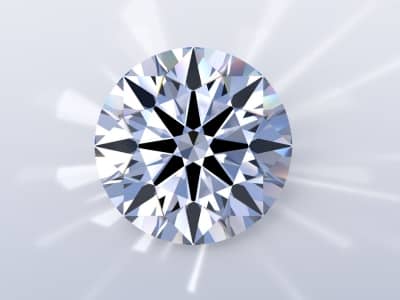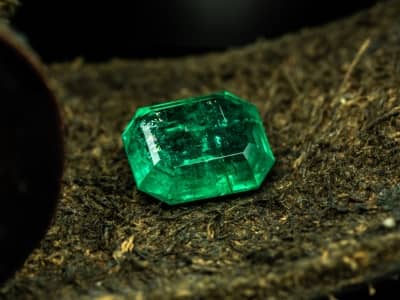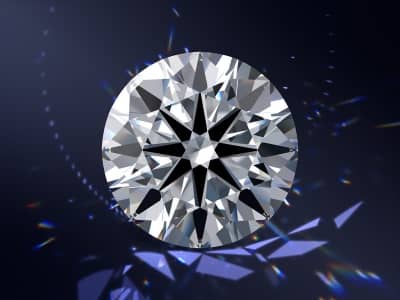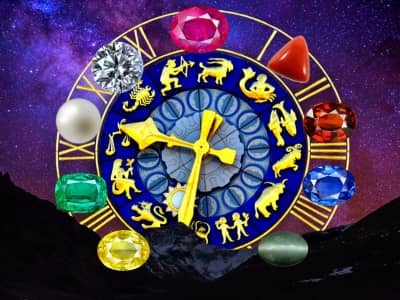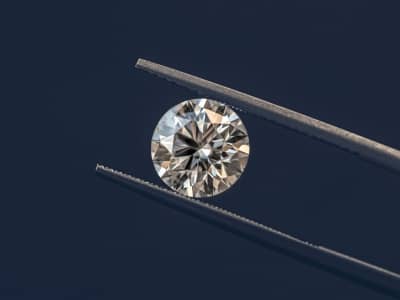Natural Diamonds
Round Shape
Princess Shape
Oval Shape
Heart Shape
Cushion Shape
Emerald Shape
Diamond Color
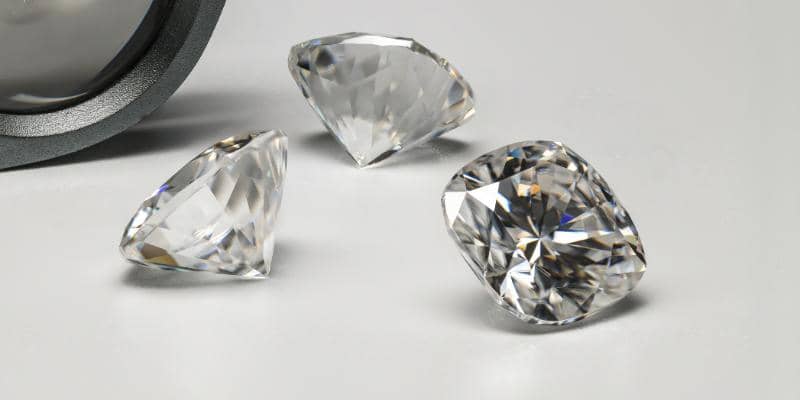
In general, diamonds with less color are more valuable than those with more color. Natural diamonds can range in color from completely colorless to slightly yellow or brown. Other colored diamonds, such as pink, yellow, or blue diamonds, are graded using a different system.
The color grading system for natural diamonds uses the letters D through Z, with D representing the least amount of color and being the rarest and most valuable grade. Z grades have the most color within a normal range and are the least expensive. It can be difficult for the untrained eye to see differences in color grades D through J unless the stones are viewed side by side.
To accurately determine the color grade of a diamond, it should be evaluated under specific conditions by an expert grader. Using filtered, cool white light, graders compare sets of diamonds with known colors that have been graded by the Gemological Institute of America (GIA) against their master set. To get the most accurate color grade, graders often place diamonds on their sides or upside-down on a neutral background to reduce the impact of spectral colors that diamonds reflect.
The Diamond Color Scale
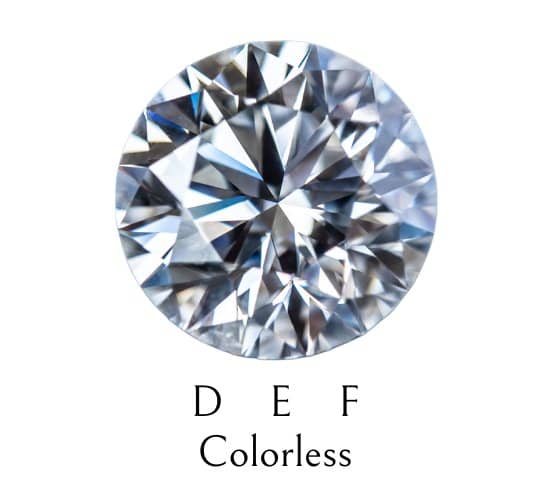
- D is the highest colour grade attributed to a diamond, denoting that the stone is completely colourless (white); as such, they are extremely rare and command the highest prices.
- The colour difference between a D and an E graded stone is usually only visible to an expert gemmologist using master stones as a comparison, although E graded stones are slightly cheaper.
- The colour difference between an E and an F is only visible to an expert gemmologist using master stones as a comparison. F grades are the lowest and therefore least expensive of the premium colours.
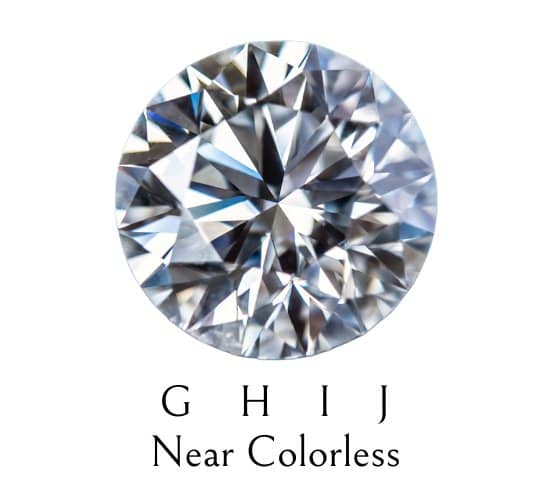
- G graded diamonds are nearly colourless and a slight colour difference only become perceptible when compared to diamonds of grades D or E. G stones appear colourless especially once set and therefore offer excellent value for money.
- H coloured diamonds are near colourless diamonds which still appear totally white or colourless if they are not compared side by side with higher colour graded stones. The H colour is generally considered the watershed between colourless diamonds and slightly tinted diamonds.
- I coloured diamonds are very slightly tinted diamonds, however, once set in jewellery, these stones may appear colourless. If you are looking to maximize your budget, then an I coloured diamond offers great value for money.
- J coloured diamonds are very slightly tinted diamonds, however, once set in jewellery, especially in yellow gold, it is harder to see the slight yellow tint which the J grade produces.
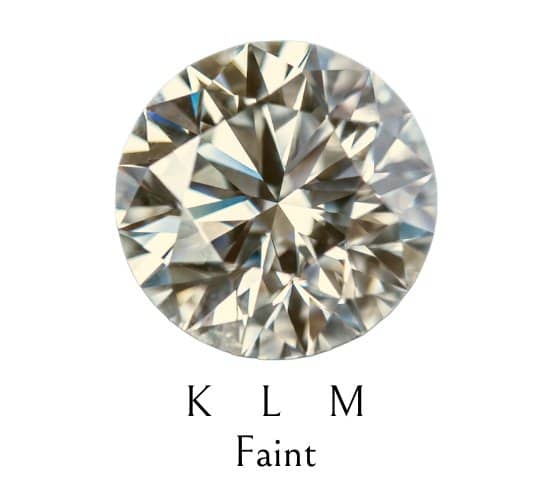
- K coloured diamonds possess a faint yellow hue, which may be noticeable when compared to higher color grades but can still appear near colorless when set in jewelry, making them a cost-effective choice.
- L coloured diamonds exhibit a light yellow tint, although it may not be apparent once the diamond is placed in a setting, allowing them to offer good value for those seeking a larger stone.
- M coloured diamonds display a faint yellow shade that becomes more visible to the naked eye, yet can still appear nearly colorless when set, providing an affordable alternative for those desiring a larger diamond.
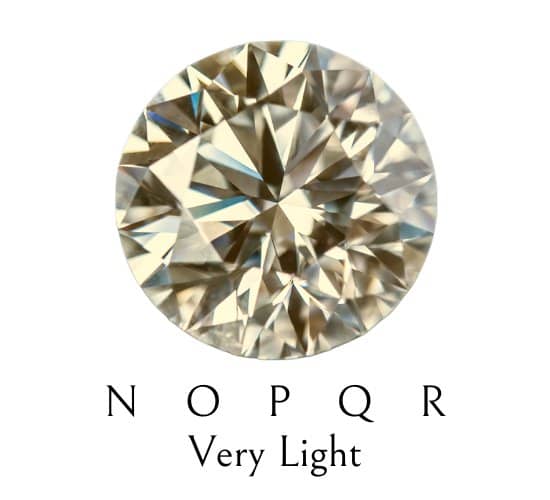
N to R coloured diamonds encompass a range of yellow hues, starting with a very light yellow in N, progressing to light yellow in O, and advancing to a medium yellow in P and Q, ultimately culminating in a captivating medium to dark yellow shade in R, providing a diverse selection of warm and vibrant options for those seeking diamonds with noticeable and enchanting yellow tones.
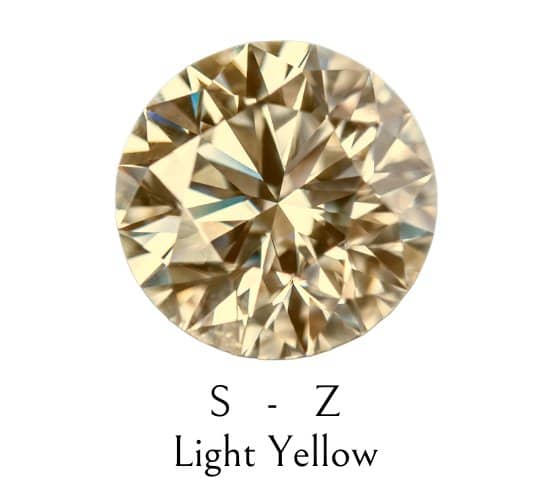
S to Z colored diamonds typically exhibit varying degrees of yellow or brown hues, with the intensity intensifying as you progress towards the end of the scale. These diamonds are categorized within the normal color range and are not classified as fancy colors. They offer a diverse selection of unique and vibrant hues, providing alternative options for those who appreciate the distinct character and warmth of yellow or brown-toned diamonds.
Expert Tip #1: For colorless diamonds, the differences between D and G grades are often difficult to see with the naked eye, but D diamonds can be 20-40% more valuable than G diamonds. D diamonds are generally preferred by investors or diamond connoisseurs.
Expert Tip #2: H-graded diamonds are considered to be on the border between premium colorless diamonds and those with a slight yellow or brown tint. They offer good value without any visible yellow or brown tint unless compared side by side with a whiter diamond.
Expert Tip #3: I and J color diamonds generally appear white from the top, but you may be able to detect slight yellow or brown tints when viewing them from multiple angles. Gems For Everyone recommends staying with GIA, IGI graded diamonds in these color grades, as other certificates in this range may not meet your color expectations.
Expert Tip #4: K and L color diamonds may be acceptable on a GIA, IGI certificate if a major compromise on color is necessary to fit your budget. Gems For Everyone suggests setting these diamonds in yellow or rose gold jewelry to make the diamond appear less tinted.
Diamond Education
Buying Loose Diamonds
How to Buy a Diamond

